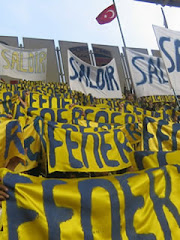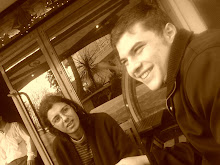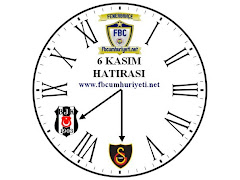30 Mart 2008 Pazar
Types of Engineering and Industrial Engineering
Biomechanical engineers are concerned with how engineering can be applied to the human body. Backpack and clothing design, child safety car seats, and running shoes are just some of the products that biomechanical engineers use their knowledge and creativity to design.
Agricultural engineers are concerned with applying engineering technology and biological science to agriculture, and design agricultural machinery and equipment.Agricultural engineers also develop ways to conserve soil and water, and to improve the processing of agricultural products.
Environmental engineering is concerned with designing and managing systems to prevent and control pollution in water, in the air, on land, and in ground water.
Civil engineering is concerned with providing structures and systems such as cities, roads, buildings, bridges, railroads, and water systems. In addition, they protect society from the extreme forces of nature such as high winds, earthquakes, and floods.
Computer Engineering is concerned with understanding and design of computers and computational processes, including both hardware and software.The ultimate goal of computer science is to enable computer technology to solve problems in science, business, and industry.
Materials engineering is concerned with the application of science and engineering to metallic and nonmetallic materials, including their production, processing, properties, and applications.
Engineering physics is a branch of applied science that emphasizes both engineering and physics.Engineering physicists perform research and development in high-technology industries in the fields of telecommunications, microelectronics and microdevices, lasers, and novel materials.
Chemical engineering is a engineering discipline based on the fundamental sciences of chemistry, physics, biochemistry, and mathematics, in which processes are conceived, designed, and operated to affect compositional changes in materials of all kinds.
Architectural engineering is a profession that focuses the problem-solving techniques of the engineer toward the design and construction of safe, economical buildings.
Nuclear engineering is concerned with the engineering aspects of the uses of nuclear processes for supplying human needs.
Electrical engineers is concerned with applying specialized engineering skills to the design, manufacture, application, installation, and operation of electrical products and systems.Electrical engineering is using in many areas such as systems control, electromagnetics, photonics, electronics, and power systems and devices.
Aerospace engineering is concerned with design, construction, and operation of vehicles that move above the Earth's surface.For example;aircraft, spacecraft, missiles,rockets,jets and Space Shuttles.
Mechanical engineering is concerned with the design, development, and construction of nearly all of the physical devices and systems that technology has produced. Mechanical engineers are also concerned with the operations of all kinds of machinery and the production of power. They must conceive, research, design, develop, test, manufacture, and sell equipment for these purposes.
Industrial engineering is concerned with the design, installation, improvement, evaluation, and control of socio-technical systems in virtually all sectors, including manufacturing, distribution, government, energy, health care, and finance.
Industrial engineers difference from other engineering types is that they integrate humans, machines, materials, and information to optimize the performance of systems using resources in the most efficient way without hurting social and physical environment.In conclusion,they use ssciences,maths,physics and other engineering informations to eliminate wastes of time, money, materials, energy, and resources.They increase efficiency of everything in their working area.There are several branches of industrial engineering with respect to their work such as Operations Research, Management Science, Financial Engineering, Supply Chain management, Manufacturing Engineering, Engineering Management, Systems Engineering,Process Engineering, Value Engineering and Quality Engineering.
references: http://www.futuresinengineering.com/what.php?id=2
29 Mart 2008 Cumartesi
What Engineers Do?-Engineering as a profession
- makes useful and practical inventions,
- find suitable solutions to problems,
- desings new systems,
taking into account of cost,safety,marketability,productiblity and serviceability with using their knowledge of mathematics,physics and other sciences.
Due to requirements of world and people,engineers appeared in order to fill the changing worlds needs.But with the technology peoples needs varied.Thus,engineers expertised in many different fields to give more useful work.
History Of Engineering and Engineering Education

In the 19th century engineering become more narrowly using in the fields mathematics and science.In addition to military and civil engineering,mechanic arts are included in engineering and universities began to education of engineering.
1817 – The U.S. Military Academy (West Point, New York)
1819 – An institution now known as Norwich University (Vermont)
1825 – Rensselaer Polytechnic Institute (New York)
references:
http://www.futuresinengineering.com/what.php?id=1
http://www.6thcorpscombatengineers.com/history.htm
http://en.wikipedia.org/wiki/Engineering#Engineering_in_a_social_context
My Choice
The pyramids general rule-if any need in any level of pyramid is missing,the upper level cannot be activated-can be used in many areas of life.For example,Maslow's pyramid modified and used in education and management.In management by satisfying workers needs their working capacity is increasing and parralel to thay efficiency is increasing.The same method is using in education on students.
Furthermore,with using the pyramid,we can easily focus on people's neeeds that is to say what is missing in their life and what makes them inmotivated.After that we can work out and satisfiying them we can make people happier.The more people become happy,the better world become to live and the life would become more entartaining.
Abraham Maslow
Maslow hierarchy pyramide:

Maslow has set up a hierarchy of five levels of basic needs. In the levels of the five basic needs, the person does not feel the second need until the demands of the first have been satisfied. Maslow's basic needs are as follows:
Physiological Needs
These are biological needs. They consist of needs for oxygen, food, water, and a relatively constant body temperature. They are the strongest needs because if a person were doesn’t have the needs,person searchs for satisfaction.
Safety Needs
When all physiological needs are satisfied, the needs for security can become active. Adults aren’t aware of their security needs except in times of emergency. Children often display the signs of insecurity and the need to be safe.
Needs of Love, Affection and Belongingness
When the needs for safety and for physiological well-being are satisfied, the next class of needs for love, affection and belongingness can emerge. Maslow states that people seek to overcome feelings of loneliness and alienation. This involves both giving and receiving love, affection and the sense of belonging.
Needs for Esteem
When the first three classes of needs are satisfied, the needs for esteem can become dominant. These involve needs for both self-esteem and for the esteem a person gets from others. Humans have a need for a stable, firmly based, high level of self-respect, and respect from others. When these needs are satisfied, the person feels self-confident and valuable as a person in the world. When these needs are frustrated, the person feels weak, helpless and worthless.
Needs for Self-Actualization
When all of the needs are satisfied,the needs for self-actualization activated. Maslow describes self-actualization as a person's need to be and do that which the person was "born to do”.For example, a musician born to play music.
With respect to Maslows pyramid,for example if person is lack of 3,4 and 5th steps we can know that what is missing in person’s life.
Maslow’s pyramid is also used in management.He is called as the Father of Enlightened management.references:http://honolulu.hawaii.edu/intranet/committees/FacDevCom/guidebk/teachtip/maslow.htm
Frederic Winslow Taylor
Frederic W. Taylor worked on scientific management and industrial enginnering. Taylor believed that the industrial management of his day was amateurish and he developed methods to increase efficency called Taylorism.
Taylor has many contributions to science.For example; he specified a work method and he taught the method to the operator.He continued standart conditions for performing that work.He designed tools and fixtures.He set time for every work.He paid more Money for doing the task as specified.He suggested separation of planning from operations and clear delineation of authority and responsibility .Main principles of Taylorizm are:
- The work of each employee be planned out by the management at least one day in advance .
- Workers were to receive complete written instructions describing their tasks in detail and noting the means to accomplish them.
- Each job was to have a standard time, determined by time studies made by experts.
- Work assignment must divided into “elements” which is called division of labor
- These elements must be timed and to be used to determine the allowed time for the task.
Taylorism is often mentioned along with Fordism, because it was closely associated with mass production methods in manufacturing factories.
references:
Henry Fayol
1. Planning:Examining the future and drawing up a plan of action.
2. Organizing:Building a structure using human and materials
3. Commanding:. Implementing an activity among personel.
4. Cordinating:. Coordination among personel,binding them togeter.
5. Controlling: Using rules and commands,seeing that everything is under control and ordinary.
Henry Fayol considered that there are 14 principles of management.They are :
1-Division of Work. Dividing work into groups of employees so that everybody can work efficiently.
2-Authority:Everybody has a responsibilty to someone who got the auhority.
3-Discipline. Employees must obey rules of manager.
4-Unity of Command. Each worker should have only one boss.
5-Unity of Direction. People engaged in the same kind of activities must have the same objectives in a single plan..
6-Subordination of individual interest (to the general interest). Management must see that the goals of the firms are always paramount.
7-Remuneration. Payment is an important motivator so who does perfect job gets more payment
8-Centralization (or Decentralization). This is a matter of degree depending on the condition of the business and the quality of its personnel.
10-Scalar chain:Scalar chain refers to the number of levels in the hierarchy from the ultimate authority to the lowest level in the organization. It
11-Order. Both material order and social order are necessary. The former minimizes lost time and useless handling of materials. The latter is achieved through organization and selection.
12-Equality. :Justice is requaried so that employees can be relax and work well.
13-Stability of Tenure of Personnel. Employees work better if job security and career progress are assured to them.
14-Initiative. Allowing all personnel to show their initiative in some way is a source of strength for the organization.
15-Esprit de Corps. Management must foster the morale of its employees. By rewarding,encouraging and good relationships
Fayol’s management theories sometimes associated with Taylor’s theories.The difference is that Taylor viewed management processes from the bottom up, while Fayol viewed it from the top down.Taylor studied the workers actions first he developed methods for making them more productive more efficient.However,Fayol started with unity of command and goes the most elemental part,workers.
References:http://www.12manage.com/methods_fayol_14_principles_of_management.html
http://en.wikipedia.org/wiki/Henry_Fayol
GILBRETHS
Gilbreths worked on industrial engineering field.They studied a method named time and motion.Motion study aims to eliminate unnecessary work and desing effective,efficient and suitable methods for employeers.By eliminating unnecessary work,simplifying operations they established the most favorable motion sequence.The method was based on bricklayers since Frank Bunker Gilbreth was a bricklayer apprentience.
Their work on time and motion sometimes associated with Frederic W. Taylor,but there are differences.Taylor concerned on reducing time of process;however,Gilbreths method make process more efficient by reducing the motions involved.In contrast to Taylor,Gilbrets were concerned with workers welfare.
Gilbrets other contributions to science can be listed as:
- Use of process flowcharts,
- Design of work tables and chairs with proper heights,
- Micromotion study – study the fundamental elements of an operation using a motion picture camera and a timing device that accurately indicates the time intervals on the motion picture film.
- Cyclegraphic and chronocyclegraphic analysis (to study motion path of an operator)
- Developed process charts, left-hand-right-hand charts, and therbligs
Also studied fatigue, monotony, transfer of skills, and increasing mobility of handicapped.
References:Bilkent university lecture IE271(powerpoint), http://en.wikipedia.org/wiki/Frank_Bunker_Gilbreth
http://en.wikipedia.org/wiki/Lillian_Moller_Gilbreth
Maximilian Carl Emil Weber
In the book,The protestant ethnic and the spirit of capitalizm(1905),he concluded that "capitalist accumulation" was born from protestant ethnic.He compared protestant and catholic and showed that Protestant save more money and have higher productivity.in contrast,Catholic was less productive but spent more.
Weber defined bureaucracies as goal oriented organizations designed according to rational principles in order to efficiently attain their goals (Verstehen).
His main thesis -Verstehen doctrine- is that social,economic and historical research can enver be fully inductive or descriptive.One must approach it with a conceptual apparatus which is identified as " ideal type".There are 4 categories of "ideal type".
1) zweckrational (rational means to rational ends),
2)wertrational (rational means to irrational ends),
3)affektual (guided by emotion)
4)traditional (guided by custom or habit).
Weber also discussed authority.He used ideal types and explain this in terms of traditional authority (pre-modern), rational-legal authority (modern), and charismatic.
Max Weber said that sociology is a science that is concerned with a social action and the course and consequences of the action. He had a large influence on many of the ideas that are used in sociology today.
references:http://zoo.parkingspa.com/nmssad.htm
http://www.6sociologists.20m.com//weber.html
http://en.wikipedia.org/wiki/Max_Weber
14 Mart 2008 Cuma
Henry Ford
Henry Ford did not invent the principles of mass production--they were in usefor nearly a century before the Model T--but Ford had the vision to apply mass production techniques to the manufacture of automobiles. Before Ford adapted mass production, assembly-line techniques to the building of Model T's, each car took twelve and one-half hours to build. After the inventor's innovations were in place, the time required to build each car was reduced to a little more than an hour and a half, and the cost per unit was lowered as well--from $950 for the first Model T's, to only $290 per auto in 1927. Ford's innovations called for the worker to stand at one place while the automobile was moved down the "assembly line" on a conveyor belt. Simultaneously, the parts the workers needed were brought to the work station on another conveyor. Bodies were built on one line; the chassis and drive train were built on another, and the two parts were bolted together at final assembly. It was an extremely efficient method of auto production, and the success of the Model T was in large part due to the low cost associated with Ford's mass production techniques.
Despite his manufacturing prowess, Ford's dictatorial management style and reluctance to alter his product to keep pace with the changing demands of the public signaled the end of the Ford Motor Company's world dominance. By 1936,the Ford Motor Company's share of the automotive market ranked the company in third place behind General Motors and the Chrysler Corporation. Henry Ford held all of the stock in the company that bore his name and kept strict control of the company until he retired.
13 Mart 2008 Perşembe
Frederic Winslow Taylor
Taylor believed that contemporary management was amateurish, and should be studied as a discipline; that workers should co-operate (and hence would not need Trade Unions); and that the best results would come from the partnership between a trained and qualified management and a co-operative and innovative workforce. Each side needed the other.
He is known for coinage of the term scientific management in his article The Principles of Scientific Management published in 1911. However his approach is more often referred to, frequently disparagingly, as Taylorism.
Some principles of Taylorism include:
· Develop a "science" for every job, including rules motion, standardized work implements, and proper working conditions.
· Carefully select workers with the right abilities for the job.
· Carefully train these workers to do the job, and give them proper incentives to cooperate with the job science.
· Support these workers by planning their work and by smoothing the way as they go about their jobs.
10 Mart 2008 Pazartesi
Frederic Taylor
Taylorizm genel anlamda, iş verimini ve üretim hızını arttırmayı hedeflemiş ve üretim faaliyetinde çalışan işçilerin emeğinden en üst düzeyde yararlanmayı kendine şiar edinmiştir.
Taylorizm felsefesinin temel kavramları şunlardır :
- Üretim organizasyonunda iş bölümünü arttırmakÜretim sürecindeki işlemleri parçalara bölmek ve standartlaştımak,
- Üretimde zaman kaybettirici tüm öğeleri ayıklamak,
- İşçileri yaptıkları işlerle ilgili sürekli eğitmek,
- İş düzenine ve zaman denetimine azami derecede önem vermek,
- Çalışanların yönetiminde otoriter bir tarz izlemek,
- İşletmelerde dikey organizasyonu ve katı bir hiyerarşik bir düzeni tercih etmek...
Taylorizm yöntemleri teknik açıdan başarılıdır ancak etik açıdan sorunludur çünkü insanalra karşı mekanik ve olumsuz biçimde yaklaşmıştır.işçileri birer makine olarak görmüştür.Ancak o dönemde tasarladığı makineler ile seri üretime geçilmesinde büyük rol oynamıştır.Fabrikalarda verimi %100-%1000 kadar arttırmıştır.
.jpg)

